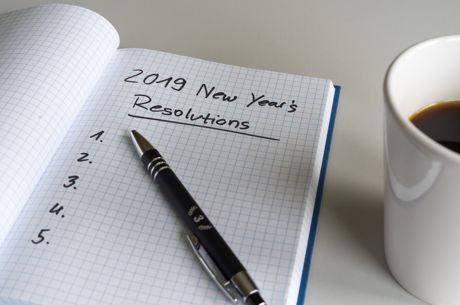How to Play Pocket Jacks Preflop Versus a Three-Bet

DECISION POINT: In a no-limit hold'em tournament, you raise from under the gun with J?J?. A middle position player then min-reraises you and everyone else folds. Action is on you...
PRO ANSWER: Generally speaking, hands like J-J and T-T play better as four-bet shoves facing a three-bet instead of calls, as they have lots of equity against reasonable hand ranges but have a hard time realizing their equity postflop. This is in large part due to their inability to get value from hands they beat (lower pairs) on overcard flops. However, the Villain's range here is a concern and is often tight enough to warrant a call instead of a shove.
Folding to the min-reraise here would definitely be a mistake, as we only need to call 1,100 more to play an 8,800-chip pot. That means we need to realize 11 / 88 or 12.5 percent equity to continue by calling. That is certainly attainable as we have over 35 percent equity under reasonable assumptions about our opponent's range (no bluffs, linear value range consisting of premiums only) and just under 20 percent equity against the ultra-premium range KK+.
The real question is whether we can infer enough about the narrowness of our opponent's range due to the min-reraise and change our strategy from shoving to calling. The more narrow the player's range, the more we should call rather than shove. It's true that opponents often take this sizing only with monsters like A-A and sometimes K-K. Other times it's a misclick reraise with a much weaker calling hand.
However, the fact that we are raising UTG on 18 big blinds and our opponent is min-reraising us from MP1 with only 20 big blinds screams strength.
As an exploitative adjustment against an ultra-premium range, we could call and only continue postflop when we improve (flopping a set, overpair plus straight draw, or flush draw on monotone board).
If we believe our opponent's range is slightly wider than ultra-premium hands but still very value heavy, we could call and continue on any flops that don't contain a Q, K, or A.
If we believe our opponent is reraising with wider than a premium value range, then we should reraise all in preflop.
Overall, calling is the best play against most opponents.
LearnWPT is a poker training site dedicated to transforming the poker games of rank beginners, skilled amateurs, and aspiring professionals. Offering both Live Workshops and Online Training, is a one-stop shop for poker education, designed to provide all the tools a player needs to become a winner. Visit LearnWPT.com today and get 2 Free Strategy Episodes that will immediately impact how you play. LearnWPT.com - Think Like a Pro!









